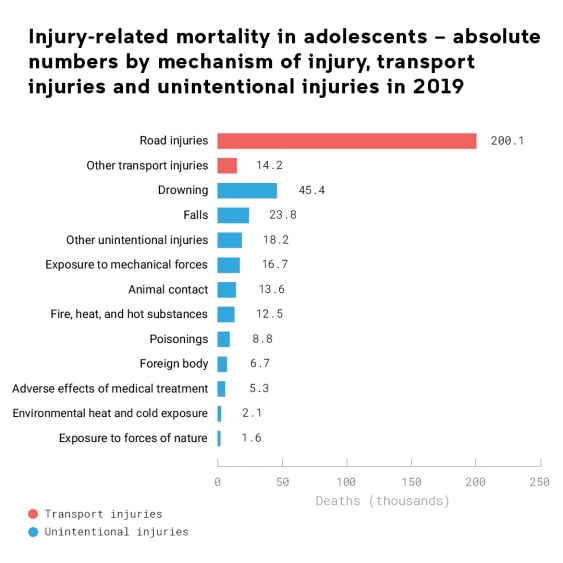Prevention progress stalling
According to the research, reductions in transport injury death rates in high-income countries have slowed in the most recent decade. They dropped just 1.7 per cent a year between 2010 and 2019 compared to the fall of 2.4 per cent a year between 1990 and 2010.
“In high-income countries like Australia, there’s been a real decline in progress. In the past 10 years, we’ve seen reductions in rates of road transport injury essentially stall, showing a lack of attention to the issue,” Dr Peden says.
Adolescents are particularly vulnerable to injury risk due to increasing independence and risk-taking tendencies. However, there has been little research to date that has examined injury patterns in this vulnerable age group.
As other causes of mortality in young adults get more focus, Dr Peden says the lack of progress in reducing transport injury deaths only becomes more apparent.
“Despite being the leading cause of death in adolescents globally, it’s been relatively neglected when you consider the strong action on other non-injury causes of death among adolescents,” Dr Peden says.
There is also a growing burden of transport injuries in low-income countries, where the proportion of deaths almost doubled from 28 per cent in 1990 (74,713 of 271,772) to 47 per cent in 2019 (100,102 of 214,337).
‘There are simple, affordable and proven interventions to reduce road traffic injuries that are not being applied or enforced.’
Dr Peden says the shift in the burden of transport injury toward lower-income countries needs urgent assistance from the global community.
“Low socio-demographic index (SDI) countries are dealing with the challenges that come with rapid urbanisation, and as such, young people are at a greater risk of road traffic and other types of injury,” Dr Peden says.

Transport and unintentional injuries are the biggest killers of young people. Image: UNSW Sydney.
















